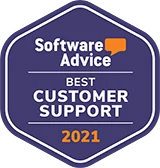While many people think about software companies like Netflix and Spotify when they hear the term subscription model, over recent years, this revenue-generating strategy has been adopted by several companies that sell and rent physical goods.
This article will explore how the subscription business model works, why it's a good choice, and how you can plan, design, and launch a subscription business.
What is a subscription business model?
A subscription business model is a type of recurring revenue model where customers pay a regular fee on a weekly, monthly, or annual basis. Customers can sign up for fixed periods or avail of flexible rolling contracts.
This business model works by establishing stronger customer relationships that help ensure retention. A big part of building these relationships is getting your subscription pricing right. Customers will stay if you provide them with value, but you need to balance that against profitability. Set your prices too high, and you narrow your customer base; set them too low, and you'll struggle to stay afloat.
How do subscription services work?
A subscription business model works by auto-renewing through a credit or debit card or a payment processor like PayPal, simplifying subscription payment processes. Each plan outlines specific terms of service. Typically, subscriptions can be renewed or canceled at any time.
A subscription is essentially a contract between a business and a consumer. The customer pays her, for example, a monthly fee, and the company provides access to the agreed product or service.
Why have subscription models become so popular?
There are several good reasons why the subscription-based business model has exploded in popularity in recent years. Let's look at some of the big drivers behind this shift in how businesses operate.
Shifting consumer habits
The rise of the subscription business model has coincided with changes in how people relate to goods. Consumers, in particular Millenials and Gen Z, want access to products or services rather than ownership. People want experiences rather than goods, and a subscription service can offer a cost-effective way to satisfy that desire.
Personalization
The digital revolution means that customers are sharing more data with businesses. This situation has allowed businesses to have a great understanding of their customer's habits and preferences. As a result, modern consumers expect personalized services.
Price
Price is another factor in the rise of subscription offerings. Digitization has allowed leaner, more efficient services, while many subscription businesses can offer lower prices by cutting out intermediaries and selling directly to consumers (D2C).
Pros and cons of the subscription business model
Like all business approaches, subscription business models have pros and cons.
Subscription business model pros
There are several reasons why a recurring revenue sales strategy has become the number one choice for many businesses. Let's look at some of the advantages of subscription companies.
Predictable revenue
A predictable cash flow is a massive plus of the subscription business model. If you understand your monthly costs and revenues, you can work out how much operational capital you have each month.
Additionally, because most subscription models use monthly payments, you always have income flowing into the business.
Another consideration is that recurring revenue models are super attractive to investors.
Sustainable
Subscription business models can offer a closed-loop kind of product sales. Instead of customers buying a product, using it, and throwing it out, recurring rental services incentivize users to return the product to the business when they are gone with it. From there, the company can rent it again, refurbish it, strip it for parts, or dispose of it responsibly.
Additionally, things like clothes or baby items use a lot of natural resources, get used infrequently, and end up in a landfill. Subscription business models help break that cycle.
More accurate forecasting
Subscription models provide predictable revenue. Businesses can make far more accurate forecasts when they understand their monthly recurring revenue (MRR) or annual recurring revenues (ARR). Additionally, predictable income helps with cash flow.
Lower barrier to entry
One reason for the rise of the subscription model is that it lowers the barrier to entry for products or services. Instead of paying a lump sum upfront for designer goods or electronics, consumers can access these goods for a monthly fee.
Boost customer relationships
Subscription models can lead to strong customer relationships. If your service is good and you establish loyalty and trust, you can retain customers for years. This can lead to a customer lifetime value (CLV) that's far more than revenues you could generate for one-off purchases.
Reduce customer acquisition costs
Because subscription models rely on consistent and regular repeat revenue and stronger customer relationships, businesses are less reliant on constantly generating new customers. While subscription businesses still need to perform their share of sales and marketing, their need is not as pronounced.
Lower customer retention costs
Retaining customers is another expense for traditional business models. However, as long as subscribers don't cancel, income will be generated without as much need for promotions, email marketing, sales and account executives, etc.
Subscription business model cons
Competitive market
With so many businesses adopting the subscription model, it can be hard to stand out. Subscription fatigue refers to the potential for customers to get tired of subscriptions due to overwhelming choices. If your service starts slipping or customers get bored, someone is always ready to take advantage or undercut you on price.
User churn
User churn and subscription fatigue are real problems for subscription models. The subscription economy is filled with examples of promising models that ran out of steam.
Blue Apron is a cautionary tale of a subscription business that faced stiff competition in the meal kit space and began to spiral. Their share price has dropped by 99% since the brand's IPO.
The average churn rate for a subscription business is around 6 to 8%. Maintaining growth means adding more than 6 to 8% to your customer base each month. With customer acquisition costs so high due to competition, adding enough new customers to overcome your churn rate can start cutting your margins — this is why customer retention is crucial.
Maintaining value
Somewhat related to user churn, the subscription model requires a constant need to maintain value to stop users from leaving. As we mentioned above, once the novelty of the initial service has worn off, some customers might become bored and look out for a new subscription service to try.
Customer loyalty is reliant on providing a fantastic service that consumers can justify. During the recent cost of living crisis, global consumers have canceled subscriptions at a high rate. Inflation and recessions lead to budget tightening and less spending on certain non-essential goods.
It's not even that the subscription model is more vulnerable during economic downtimes, but more that businesses need to find a competitive advantage to avoid being one of the services that get cut. In a recent YouGov poll, about 35% of people surveyed said a streaming service was one of the first expenses they would eliminate to save money.
The past, present, and future of the subscription business models
Subscription model past
While the subscription model might seem like some new-fangled Silicon Valley startup thing, it's actually far older. In fact, the first recurring revenue model can be traced back as far as the 15th century. Books and magazines were the first subscription models all the way back in 1440.
In the 17th century United Kingdom, fire insurance subscription services emerged. Soon, a monthly or yearly subscription for various goods and services like charities, financial services, and more became standard.
From there, subscription models were used for a variety of things. Milk deliveries, newspapers, books, and records. The Columbia Records Club is widely regarded as one of the most iconic subscription services of the 20th century.
Subscription model present
The modern-day subscription model owes its popularity to digitization. While part of that is down to the fact that digital goods like software and music can be easily shared, it's also about the technology that has facilitated access to these services.
Contemporary subscription models can be found for all sorts of things. Meal prep services, razors, pet food, wine, cosmetics, and more have all thrived under the subscription model.
Subscription model future
The subscription business model is here to stay. However, how it evolves in the future is open to speculation. One thing that is for sure is that trends toward sustainability, decluttering, and more compact living will continue. The population of the Earth hit 8 billion people recently, so finding ways to maximize space while being kinder to the environment will continue.
Physical goods subscription services experienced strong growth during COVID-19. That trend will continue into the future. In fact, research suggests that physical goods are the most significant potential growth area in the subscription space and will soon represent 45% of the total revenue of subscription services.
Rentals and subscriptions for cars, tech, fashion, fitness equipment, luxury goods, and more will continue to grow as the shift from ownership to access continues.
Health and fitness, wellness, collectibles, and plants and flowers are all earmarked as substantial growth areas for the subscription model.
Should you use a subscription-based business model?
The subscription business model won't work for every business. Before adopting this revenue generation strategy, here are some questions you need to ask.
Do your customers buy the same product regularly?
Moving to a subscription model could make sense if you sell a product or service that people frequently buy. Take pet food as an example. It's something that some people always need, so setting up monthly deliveries makes sense. This translates to many different consumer products like cosmetics, food, medicine, etc.
Can you sell curated subscriptions of niche products?
The next subscription business model that can work is where you sell a niche product. Instead of selling the same goods, you can source and sell a wide variety of items and help your customers discover new and exciting products.
Can your business provide extra value that you can monetize?
Physical goods retailers are increasingly finding ways to supplement their physical products with rental opportunities. For example, the video doorbell product Ring sells subscription access to cloud storage.
Is your product expensive?
High-ticket items are increasingly offering subscription options. Leases for phones, electronics, and cars are nothing particularly new, but they are growing. Renting goods is an alternative to buying on credit that will continue to gain relevance in our modern economy.
Popular subscription models for physical goods
Replenishment model
The replenishment model works for goods that people need to replace constantly. Razors are a great example of this approach, but the model can be applied to pet food, water, cosmetics, diapers, supplements, cleaning products, and so on.
Subscription boxes
A subscription box is a typical monthly recurring service that delivers a niche product.
Subscription boxes can be used for almost anything. Some popular curated boxes are for fine wines, beer, food, cosmetics, and collectibles.
Open or closed memberships
Open membership models allow customers access to extra services like free delivery, insurance, discounts, and other value-adding services.
On the other hand, closed membership gives exclusive access to goods and services. These can include gyms, creative spaces like photography studios and craft spaces, and so on.
Rental goods
Rental businesses have also embraced the product-as-a-service and subscription business model. Some services offer long-term rentals of furniture, cars, and electrical goods. In contrast, other services offer access to a designated amount of items per month, such as clothes, bags, and other luxury goods.
Challenges associated with subscription business models
Most subscriptions have a monthly rolling model. That gives the consumer a lot of flexibility, but it does put a lot of pressure on each subscription business to keep providing value. That is especially true for curated items. Because canceling a subscription is as easy as clicking a button — and it should be — it means that users will cancel if the value dips.
Additionally, subscriptions aren't a set-and-forget service. Customers are constantly reminded about the service they are paying for because it is arriving at the property, and it appears on their bill. Thus, they are continually engaging in the question of whether it is justified or providing enough value.
Other notable challenges include stock storage, inventory management, and distribution. Ensuring efficient logistical processes is integral to delivering a good service that you can't overlook.
Why subscription business models are sustainable
Subscription businesses allow consumers to lighten the environmental impact through a more circular consumption. Instead of paying for something outright, users can lease goods for the times they need them.
Baby clothes and equipment are a perfect example because instead of being used for a few months by one family, the same items can keep providing value over the course of many years and stay out of landfills.
By retaining the ownership of goods, companies have a stronger incentive to extend the product lifecycles and implement circularity across their entire supply chain.
Create a subscription business plan
To adopt a subscription business model, you need to create a business plan. Here are some key things you need to do to get your subscription business off the ground.
We have written a complete guide on creating go-to-market strategies, so check that out if you want to dig deeper.
Design your subscription offering
Designing your service is the first and most important step. What goods do you think there is demand in the market for? Are there gaps or inefficiencies in current services? Can you disrupt an existing industry by cutting out intermediaries?
Research your market and establish that enough consumers want what you are offering.
Plan the financial model
One of the most important things you must do is to plan your financial model. Different models work for different sectors, brands, and customers. Subscription pricing is essential for capturing customers and competing with rivals.
Customer experience
The subscription economy is a relationship business. To retain customers over the long term, you need to provide consistent value. Personalized, convenient, and cost-effective services are what consumers want most, so ensure you're offering provides value at every turn.
Business operations
Next up, you must consider how to deliver your service. Staff, distribution, and a website with a payment processor are key here. A platform like Twice can help you start your subscription business by providing the core functionalities you need to get started, like a website, inventory management, and subscription payments.
Set goals and KPIs
While there are lots of KPIs that subscription businesses can use to measure success, there are a few essential metrics that you must track.
Customer acquisition costs (CAC): The total cost of the sales and marketing required to find a new customer.
Customer lifetime value (CLV): The average amount of money each customer brings in over their relationship with your brand.
Customer churn: The percentage of customers that cancel their subscription each month.
Monthly recurring revenue (MRR): Expected revenue each month which takes into account the existing order base, the expected growth, as well as the estimated churn.
Annual recurring revenue (ARR): Similar to MRR, but measures revenues on a yearly scope.
Average revenue per user (ARPU): If you have a tiered pricing model, this metric helps you find the average revenue each user brings.
Launching your subscription business
Launch your MVP
An MVP, or minimum viable product, is the most stripped-back yet functional version of your product or service. The term is more used in software development, where the first feature-limited version is called an MVP. However, the term can just as well be applied to products and services in the physical world.
MVP is about launching a no-frills version of your service into the wild and gaining more customers. MVP allows testing your product or service, getting feedback, and improving your offering. If you're considering launching a subscription business but have no prior experience, you can start with a limited product range or limit your service's geographic availability.
Measure
Collecting customer and operational data will offer insights about your product. Speak to your customers and find out what they like about your business. Perhaps more importantly, find out what they don't like. Additionally, test your pricing strategy frequently and offer tiered access to appeal to different customer bases.
Optimize
Next up, it's time to analyze the data and insights you have gathered. Understand what is driving churn and renewals and adjust pricing and service accordingly.
Scale
Once your business is running efficiently, it's time to scale. Scale differs from growth because it doesn't rely on adding more resources to drive more revenue. Utilize digital tools and automation to do more with less.
Moreover, experiment with different subscription marketing strategies to find the most effective channels and messaging that reach and talk to the customer profiles you're trying to acquire for your service.
Famous examples of subscription-based business models
Here is a mix of brands that have successfully used a subscription business model. Each of these businesses has something to teach subscription companies that sell a physical product.
Dollar Shave Club
Dollar Shave Club is an excellent example of a successful subscription business model for physical goods. Their service is fairly simple. Customers pay $1 for a razor and then get new blades sent every month. Cutting out intermediaries helped them disrupt an industry and give consumers cheaper access to a product they need to replenish frequently.
Dollar Shave Club was acquired by Unilever for $1 billion in 2016.
Netflix
Netflix didn't start out as an online streaming service. They were actually a DVD rental service. However, with the advent of broadband, mobile devices, and smart TVs, they pivoted into video on demand (VOD), and the rest is history. The company experienced exceptional growth as a pioneer of this subscription model.
Adobe
Adobe's software as a service (SaaS) model grants licenses to its software for a monthly fee. This replaced selling software for one-off fees or annual licenses. Their re-emergence is proof that customers are prepared to embrace new payment models.
Rent the Runway
Rent the Runway is a fashion rental service. Users select different tiers that allow them access to items for 4 to 8 days at a time. This value here is that it enables customers to access luxury goods at affordable prices.
Homie
Homie is a subscription service for household appliances. You can, for example, subscribe to a washing machine for a fixed monthly fee or alternatively pay per wash. Moreover, they offer additional services, including free delivery, installation, reparation, moving, and recycling services. The service has clearly reached the right clientele, as Homie already has more than 3800 active subscribers.
Conclusion
Selling products via a subscription business model offers consumers a cost-effective, sustainable, and convenient way to access your products. It's a great way to capture the trend toward access rather than ownership while providing a sustainable type of commerce that is kinder on the planet.
On a business level, recurring payments make running a healthy business easier. Regular payments mean better cash flow, forecasting, and budgeting. That said, the subscription business model is not a shortcut to happiness. Competition, logistics, and the genuine issue of customer churn are all challenges your business must solve and confront.
Despite the challenges subscription businesses face, the benefits of increased customer loyalty, convenience, and recurring revenue make the subscription business model a lucrative option for innovators looking to reach new customer groups and create new revenue streams.









